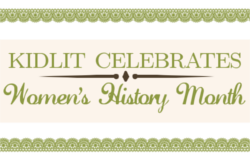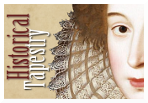In terms of sheer entertainment value, none of the speakers was able to come close to Maggie Stiefvater (one of the Merry Sisters and author of best-selling paranormal romance/werewolf series Shiver, etc.) I've read Shiver but would never have guessed that Maggie has such a wicked sense of humor, since it doesn't really shine through in that book (leans more toward the teenage angsty feelings). I had wondered why Maggie was the keynote speaker, but quickly learned in her talk that she is a blogging and social networking guru, having started blogging in 2006--back in the very early days of blogging. Since then she has written 1,338 blog posts and more than 5,000 tweets, and is present on LiveJournal, Blogger, Facebook, and Twitter. Her talk centered around "8 things I have learned about blogging," which I will not recap here since my blogging colleague over at Stacked has done a terrific job of summarizing her talk. "Blogging has changed my life," she stated--while adding that she suggests NOT blogging when you are "sick, tired, or drunk." Good advice, thanks Maggie!
I also attended an interesting panel on different blog platforms by Ryan Bickett of Lerner Publishing group--a panel that would have been especially useful six months ago when I started my blog! Some key points I took away from his talk were: design and personal branding matter; try to blog on a regular schedule; know your goals; and make use of SEO tools within whatever platform you are using.
An author panel on blog touring was especially valuable to me as a new blogger, since I am interested in including more author interviews and participating in blog tours. Michele Corriel spoke about questions that work for author interviews. She emphasized taking the time to research the author rather than using cookie-cutter questions for each author (I thought that was a given but apparently not!). Swati Avashti spoke about her recent blog tour for her new book; I was especially interested to learn that she used the blog meme In My Mailbox, hosted by The Story Siren, to find blogs to host her on her tour. She also makes use of Teenbookscene, a resource for YA blog author tours. Janet Fox talked about the importance of authors on social networks; she regularly participates in the Twitter #yalitchat and noted that has helped increase her blog following. I'm not a Twitter person myself, but I had many people at the conference tell me how important Twitter is, so I may have to start Tweeting. And finally, Jacqueline Houtman, a chemist turned children's author, talked about reaching outside of typical book promotion to publicize her "sciency fiction novel" for young people. Her launch party featured an incredible periodic table of cupcakes, photos of which went viral all over the place, particularly in the scientific sphere.
The other particularly useful panel was on blog reviews and publishers, in which I picked up some pointers on how to network with publishers in order to obtain review copies of books, as well as how to find the appropriate contact at the publisher. It's OK, I learned, if you don't have a name, to simply send an e-mail to publicity@[name of publisher]including appropriate information about your blog. There is no magic number of followers or page hits necessary to qualify for review copies--it depends on the particulars of your blog, the quality of the reviews, and the audience you are reaching.
 |
| Periodic table of cupcakes |
You can find lots more recaps on kidlitcon at the kidlitcon blog. Enjoy!

























